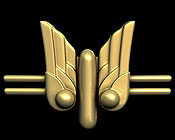



















Industrial & Art - American Bikes Virtual Show 2023
Harley-Davidson Motorcycles...
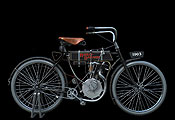
1903-1904 Prototype
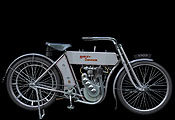
1909 Model 5A

1909 Model 5D
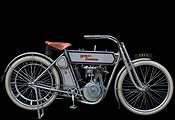
1911 Model 7

1911 Model 7D
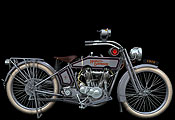
1915 Model 11F

1915 Model 11J

1915 - 11K Racer

1916 - 8 Valve Racer
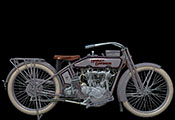
1916 - 16F
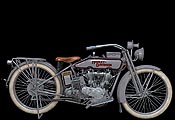
1916 - 16J

1917 Model 17F

1917 Model 17J

1918 - 61 ci. Racer

1923 - 2 cam 8 Valves

1924 - FHAC Oval Port

1925 - JD

1936 - EL
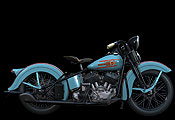
1937 - UL

1937 - EL
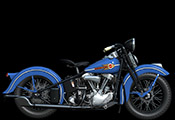
1938 - EL

1939 - EL
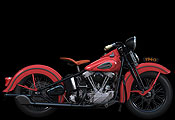
1940 - EL

1941 - FL

1942 - FL

1943 - FL

1944 - FL
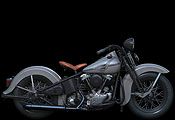
1945 - FL
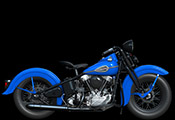
1946 - FL
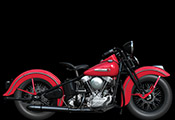
1947 - FL

1948 - FL

1949 - FL

1950 - FL
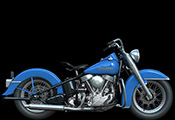
1951 - FL

1952 - FL
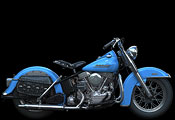
1953 - FL

1954 - FL

1955 - FL
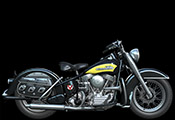
1956 - FL
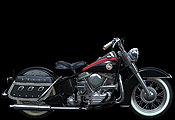
1957 - FL

1958 - FL
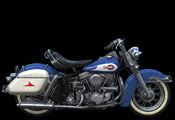
1959 - FL

1960 - FL
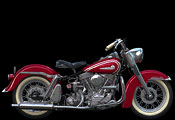
1961 - FL

1962 - FL
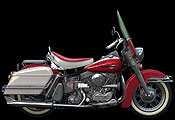
1963 - FL
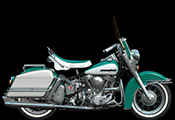
1964 - FL
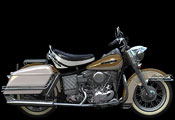
1965 - FL

1966 - FL

1970 - FL
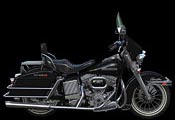
1977 - FL
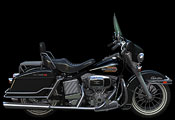
1978 - FL
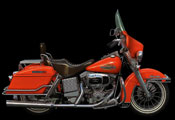
1980 - FL


Harley-Davidson WWII Motorcycles...

1942 WLA

1942 ELC
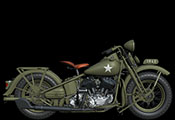
1942 UDF
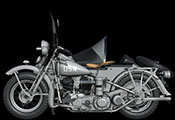
1942 NAVY UL
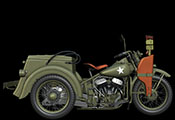
1942 Millitary Servi-Car
Harley-Davidson Servi-Car...
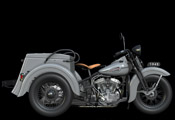
1945 Servi-Car




Easy Rider Movie Bikes 1969...
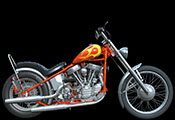
Billy Bike

Captain America



Harley-Davidson WR Racers..

1937 WR Racer

1946 WR Racer

1947 WR Racer


Harley-Davidson Engines...

25 ci. 1903

30 ci. 1909
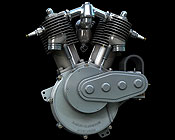
50 ci. 1909

30 ci. 1911

50 ci. 1911

61 ci. F - Head 1915

61 ci. 8 OHV Single Cam
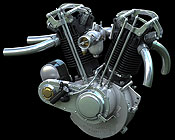
61 ci. 8 OHV Dual Cam
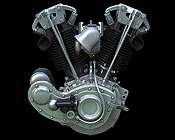
8 OHV Dual Cam Oval Port
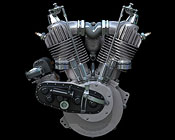
74 ci. F - Head Engine

45 ci. Flathead Engine 1929-1974
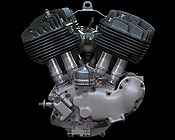
1937-39 U Type Engine
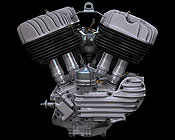
1940-48 U Type Engine
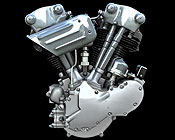
Knucklehead Engine 1936-47
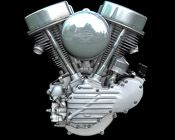
Panhead Engine 1948-65
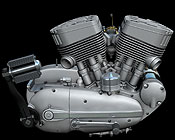
1952 K Model Engine
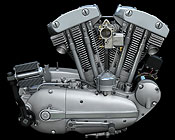
1957 Sportster XL Engine

First Shovelhead Engine 1966-1969
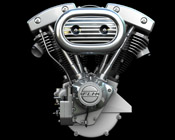
74 ci. Cone Shovelhead Engine 1970-1977

80 ci. Shovelhead Engine 1978-1984
Additional Harley-Davidson related work
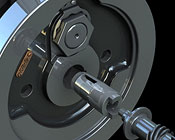
Knucklehead Exploded view

Gearbox Exploded view
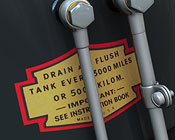
Horseshoe Oil Tank

Wishing on a star
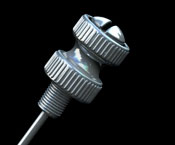
Linkert M-74 Carburetor
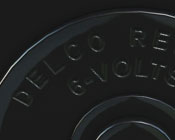
Delco Remy 16 Horn
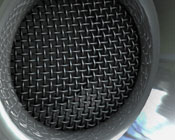
Jubilee Trumpet Horn

Foot Clutch
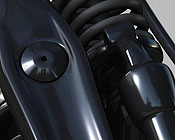
VL Voice...

Open 4 Speed Gearbox
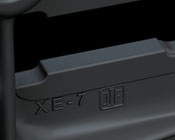
Interstate Drop Forge...
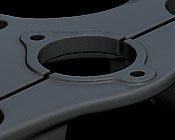
Speedster In Line...
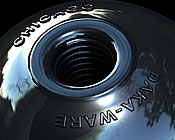
Daka-Ware...
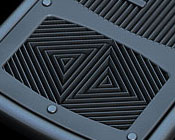
Old Footprints...
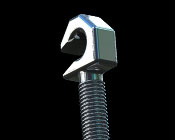
Mouse Trap...
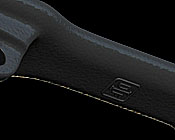
T - Bone...
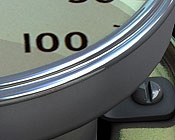
Skull Dash...

Ignition Switch...

Do we have spark ?...
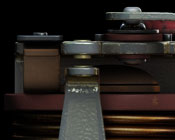
Cutout 752...

Monroe...
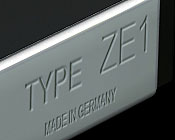
Bosch ZE1 Magneto...
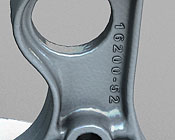
16200-52...
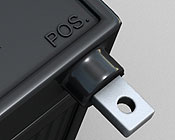
6 Volt Batteries...
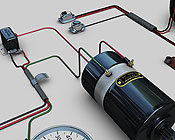
6 Volt Electric System...
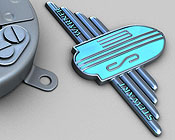
Stewart Warner...
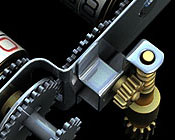
Speedometer Exploded View

SW nos Cut...
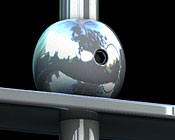
Cheese Grater...

Waffle Grip...

Langsenkamp - Linkert Co.
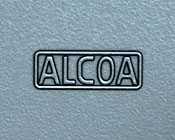
Alcoa...

Motor Castings Co.

Guide Motor Lamp Co...
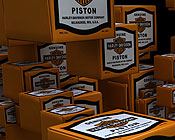
Virtual Genuine Experience...
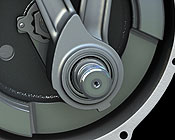
Harley-Davidson Sound...

1936 Oil Pump...
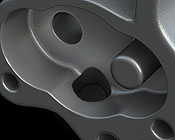
Oil Pump Exploded View

1936 Specials...
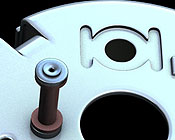
Early Timer Disassembly...
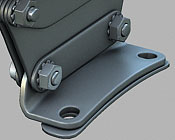
9 Bolts Horn...

Heads Evolution...
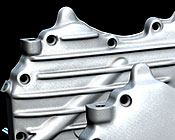
Cam Cover Evolution

TC-20 TF (GL) 2...
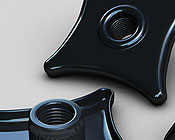
Ride Control...
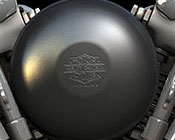
6 Inch Air Cleaner...
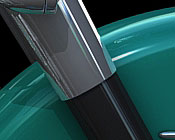
Hydra Glide Fork...
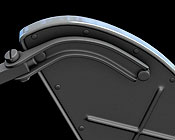
Half Moon...
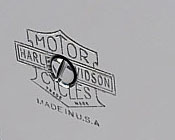
7" Inch Air Cleaner...
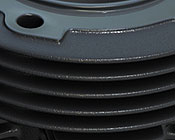
4 Fins 5 Fins...

Clutch Components...
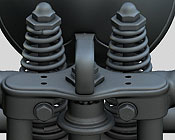
Springer Exploded View...

Front Break....
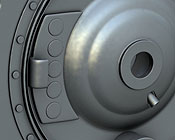
Rear Break...
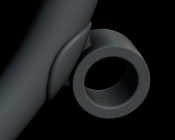
1936 Frame...
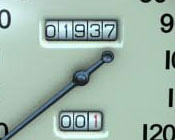
1937 Skull Dash...

Boat Tail Light...
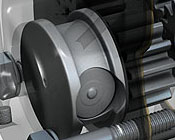
1941 Oil Pump...
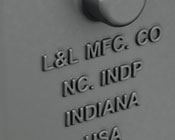
Linkert DC Carburetor...

Tombstone Tail Light...
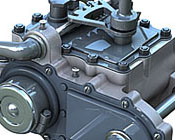
1915 Gearbox...

Remy 15...
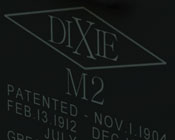
Splitdorf Dixie Magneto...

1916 Gearbox...
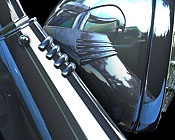
Hydra Glide Necelle...

Bumper King...
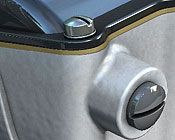
Slant Top Gearbox...

Wico...

Corbin Speedometers...
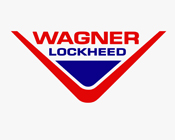
Wagner-Lockheed...
"In Motion" Works...

110 Years Ride...

H2 Battery Dance...

Linkert M5 Cut...

Speedo Double cut...

US Flag...
From the wooden shed at 38ts street and Highland Avenue built by the carpenter William C. Davidson, ( father of the Davidson brothers) came out this prototype motorcycle with 25 ci. (405 cc) 3 HP engine which proved to have adequate performance and reliability with self operated intake valve and cam driven exhaust valve, electric battery and coil, its already equipped with a compression relief handle to ease the start and leather belt as final drive, from this bike H-D developed there first commercial product around 1905...
The 1909 model 5 have a bigger 30 ci engine and a new and more compact belt tension mechanism with push button control handle and stepped bridge, the controlled pulley operation is based on two arch tooth meshing and hiding behind the main engine pulley, the 1909 single cylinder engine is reliable and from now equipped with a new Schebler carburetor, half compression, muffler bypass gate and ignition timing control, the bike is offered with two ignition options, the following one presents the magneto option, its the first time this option was available on H-D bikes, fitted with the ZE1 type Bosch magneto and recognized by the 4 bulge cam cover...
The first two cylinders bike from Harley-Davidson developed earlier and introduced as prototype in 1907, the V engine fits well into the frame shape which have roots in the bicycles production, V engines where already exist in Europe and the US however the 5D model was the first H-D two cylinders motorcycle that could be bought for 325$. with twice the power sure it was hot , it was called `Double Cylinders` . the term V Twin did not exist yet , looking back its a significant moment in the company history, the 1909 V twin engine fitted with Schebler carburetor and what seems to be an early Bosch magneto, probably DA type, the same one that was used in 1905 by Peugeot on there Double Cylinders bike...
1911 was a year with a lot of improvements on all models, according to the sales brochures "4 HP on single cylinder and 6 HP on Twin cylinder bikes , coil ignition (Like the following bike) or a magneto ignition, Vanadium and chrome nickel steel replaced carbon steel", the down tube is now strait and the steering neck reinforced with a fillet and curved rib which will stay until 1924, the pedals sprocket is smaller with the compression relief mechanism for easy starting , the 30 ci. 1911 single cylinder engine with new vertical fins, the saxophone neck shape seat post allow lower seat height, the decorative stripes around the fuel tank and battery / toolbox changed and the Bar & shield logo is start to show...
1911 model 7D was the second generation of the two cylinders bikes and the V twin engine with the new camshaft driven intake valves, its the first year of the vertical fins on Harley-Davidson engines, the engine equipped with Bosch DU magneto ignition system - the only option on the 7D model, its the first time the oil tank located under the seat , note that the manual oil pump is built in parallel to the seat downtube,the pump inject fresh oil directly to the cam cover bottom, main crank bearing and to the base of the front cylinder...the right side cover hide 4 gears which pass the motion to the magneto, the bike is still use the leather belt with tension control, matching numbers appear on cases and original fitted cylinders it maybe the first time a matching belly numbers appear to prove factory fit of main bearings racers...
The 1915 Harley Davidson set modern standards with its all new 3 speed gearbox, oiling system and the optional electric system. the 1915 F-Head engine produced 11 HP with the new gearbox could offer power to carry a sidecar even up hills, the 11F model equiped with the Bosch magneto carry the Prest-o-Light Acetylene gas lighting system and the Klaxon hand operated horn...
The Harley Davidson 1915 model 11 set modern standards with its all new 3 speed gearbox, oiling system and the optional electric system. the 1915 F-Head engine produced 11 HP with the new gearbox could offer power to carry a sidecar even up hills, here with the unique Firestone Non Skid lettering pattern tire and Gum Dipped sign... the 11J model with a complete 6V electric system based on the Remy 15 Ignition / Generator unit with a storage battery electric lights and horn...
Harley Davidson 1915 Board Track Racer model 11 K, the bike have no brakes, its got the wheel hub Clutch system operated from left hand lever (H-D Patent), with the riveted narrow fuel tank version, Schebler Carburetor, Bosch magneto and the famous kill switch...
In 1916 Harley Davidson introduced there first overhead 8 Valves twin engine mounted to there model 17 racer, the radical 8-Valves machine consider to be one of Harley Davidson crowning achievements, one that was truly innovative and advanced to that era, The 1916 8-valves racing model is rare and unique by its color and configuration, only few where made but the production of the 8V racers continue up to 1928...
1916 marks few major changes along the history of the Harley Davidson motorcycles, its the first year of the kick starter or as it used to be called the “step-starter”, its the last year of the gray color (1906-1916) which ends the era of the "Silent Gray Fellow" ,. the fuel tank shape changed to the known round edges shape, the intake manifold got curved to smooth airflow, this engine will soon lead to the 8 valves racing engine, electric system was an available option but most riders preferred the good old magneto ignition system and continue to use the acetylene gas to provide light....
1916 marks few major changes along the history of the Harley Davidson motorcycles, its the first year of the kick starter or as it used to be called the “step-starter”, its the last year of the gray color (1906-1916) which ends the era of the "Silent Gray Fellow" ,. the fuel tank shape changed to the known round edges shape, the intake manifold got curved to smooth airflow, this engine will soon lead to the 8 valves racing engine, electric system was an available option but most riders preferred the good old magneto ignition system and continue to use the acetylene gas to provide light....
1917 was the first year of the olive drab color tone which will stay until the early 30's, here decorated with the brewster green stripes with gold borders, the 1917 engine produced 16 HP and was equipped with the Four-Lobe Camshaft taken from the 8 valve racing model, this was the first time in which the cases of engine where painted too, the following bike equipped with the Remy ignition / Generator, Model 17F of that year is the same bike but with the Splitdorf Dixie magneto...
1917 was the first year of the olive drab color tone which will stay until the early 30's, here decorated with the brewster green stripes with gold borders, the 1917 engine produced 16 HP and was equipped with the Four-Lobe Camshaft taken from the 8 valve racing model, this was the first time in which the cases of engine where painted too, the following bike equipped with the Remy ignition / Generator, Model 17F of that year is the same bike but with the Splitdorf Dixie magneto...
Harley Davidson 1918 61 ci Board Track Racer with ' stress member' Keystone frame (Dealer´s Racing Frame), My thanks to Mr. Andreas Wehrmann - murderdromecycles.com (GR) for his major support and help, allowed me to focus on modeling while clearing this complex and divers history of Harley Davidson early racing bikes. this model is identical to his current bike but really he knows and built them all...
The first two cam 8 valve engine appears around 1919 and recognized by its "Banjo" cam cover, here is the bike which known as Freddy Dixon bike, as far as i know the bike exist and can bee seen at H-D museum, the 8 valve Engine have a unique timing cover which allow quick access to the magneto gear... the springer fork appears with scissors style friction damper and friction dampers on springer tips, those friction dampers could be found sometime around the handlebars center too as steering damper...
In 1924 Harley Davidson introduced this racer with with a unique oval exhaust port 8 valve engine, the engine have two camshafts arrangement here shown with the AMX carburetor and Troxel saddle...the frame is a keystone type and the springer fork with this unique look scissors style friction adjusted dampener, those kind of dampeners could be seen on springer tips and as steering dampeners around the handlebars center...
1925 marks another cross road in the evolution of Harley-Davidson when the entire line of bikes was fitted with new frames that lowered the rider by three inches and the addition of a six-position height saddle, its the first tear drop shape fuel tanks and the 74 ci F-head V-Twin engine producing 22 hp link to a three speed gearbox, this model came from the factory with, a 6-volt generator and battery, ignition system switch with a key, tail light, a two-bulb headlight with switch box, Klaxon horn and the cylindrical toolbox...
The 1936 EL is a legend, its the first year of the Knucklehead engine with 61 ci. Early 36 bikes are class by themselves and will change during the same year, some of the unique features of the early engines are the exposed rockers, the notched cam cover, the primers on thr intake ports and dome covers on the iconic rocker boxes, other unique items like the big brake light switch operated by a pull chain and the Flat Top oil tank with banjo fitting oil lines. The new - one year only 1936 frame again a special case, the new Springer fork design, the all new Speedo dash, a lot more can be told about this motorcycle, almost every part is unique to 36 which turn it to be one major H-D collectors dream with astronomic value...Note the Two Tones colors for 1936 Like the following example in Dusk Gray / Royal Buff, More combinations like Sherwood Green / Silver, Maroon / Nile Green, Venetian Blue / Croydon Cream, Teak Red / Black, the Export only Olive Drab with Black side Panels and Police Silver, Follow my Social media movies to see much more about this bike including 1936 EL full exploded view movie ...
The 1937 UL is a new bike which share many parts with the EL model except the engine which is a flathead (side valves) with 74" ci. or 80"ci choice, those will be the biggest flathead engines ever, with the new 1937 frame fitted with stronger sidecar loops it was the machine for heavy loads. the new U type engine came first with the shaved look cam cover and the Iron heads with intake primers on the left side, 1937 model is a special case where the oil tank was painted in the same color of fuel tank and fenders, the striping shapes colors and position are unique to 1937, but there are a lot more on the technical side, like the 25 Deg rake, timing control cable routing, the open rear brake stay, banjo fitting oil lines and oil feed routing, big light brake switch and the tubular rear stand, actually its the last year of them all but the U model production continued until 1948...
The 1937 EL is different from previews year in almost every part, one major change is the new strait legs frame the Knucklehead engine rockers still exposed but the heads V shape rockers brackets got longer ribs, Engine oil feed is from the bottom of oil tank, decorated with stripes on the fenders and fuel tank and the oil tank painted in the bike color. 1937 still with the "Skull" dash but with new speedometer light control lever and the unique 120 mph range dial with 5 mph graduations and the addition of a trip meter, the chain guard mounting ear enforced with three rivet. its the last year of the open rear brake stay but the rear break drum is already larger with the new star shape backing plate, 1937 is the last year of the banjo fitting oil lines and the tubular rear stand...
The 1938 EL model known for few one year only features like the skull dash with red-green lights for oil and generator monitoring, the speedometer with trip meter and new face 38-40, the Knucklehead engine got a new set of tin valves covers and unique shape oil pump with oil pressure unit, its the first year of the 3 poles delco remy cut out relay and 3 brushes generator, a new fenders sides striping paint , the patent decal on both sides of the embosed top oil tank which also fitted with hex oil line fittings replacing the banjo fittings, welded tab close the frame brake stay, a new design rear stand, the stop light switch operated with pull wire instead of chain, here the bike is shown in blue tone similar to the bike that found in the Milwaukee, Wis. museum, one of five color options for 38 plus the police silver color and the export olive color with the added front stand...the drilled brake pedal is for the redesigned parking brake mechanism...
The 1939 EL Deluxe solo model in Skyway Blue color and white panels with stainless steel trims on fenders top and sides, the new Cat Eye instruments dash and new Streamline tail light which known as theBoat tail light which will continue to decorate the rear fenders of H-D bikes until 1946,, the break switch is new and modern the famous round air cleaner appear in 6" inch diameter and the very first Deluxe solo seat with the unique 1939 only skirt and ornaments with matching Deluxe saddlebags, the patent decal placed on the toolbox again, its the last year of the Embossed top oil tank, its also the last year of the stepped star hub, the shaved cam cover the one year only high speed oil pump and shifting gate neutral position between the second and third gear...
The 1940 EL in the Flight Red color, the first year of the metal teardrop emblems 40-46 to replace the tank decals with the unique 1940 only pinstripe around them, stainless steel trims that could be found on top of rear fender too (not shown here) and a tan seat, 1940 was also the first year of the fuel shut off valve, the first year of the 8 ribs cam cover, the half moon footboards and teardrop toolbox, the larger bore T shape manifold with 4 screws flange M25 carburator and big port heads without primer signs, the first change of gearbox breather location 40-55, the patent decal placed on the left side of the oil tank, its the last year of the white speedometer face and the 6" air cleaner...
1941 was the first year of the FL models with 74 cubic inches Knucklehead engine with 5 fins cylinders, M-35 Linkert Carburetor and new centrifugal oil pump (41-49), here shown in my own interpretation to the "Cruiser Green" tone, one of 5 color options, its the first year of the airplane style speedometer face and trims around the tank (41-46), in 1941 the 5.00 x 16 wheels become to be the default and the rake changed to 28 deg, (41-46), The 4.00 x 18 wheels still available as option, the new 7 inch air cleaner, polished cam cover, frame ground tab, and the "Rocket Fin" muffler, New clutch with wider primary and improved clutch pedal and new front break hand lever (41-43), the debate about 1941 longer ribs on left case continue, i decided to present the more common seen short ribs version...
The only people that could obtain the non-military models were those dedicated to police use or to those buyers who could support the war effort. Only 799 of the “civilian” model were built in 1942 due to the war, During World War II, nearly all Harley production was directed towards building the 80,000 military “WLA” 45 cu. bikes (1942-1946). Production of civilian models was down during that time but the 1942 Knucklehead Model FL is High Performance 74 cubic inch 48 HP machine weighing 535 LBS with a top speed of 105 MPH...Note the longer ribs on the left engine case and the new hex fitting oil lines to the rocker boxes...
1943 civil motorcycles where built under materials restrictions due war times needs.Only about 203 where built during 1943 including the ES EL FS and FL types which where available only in Gray / Silver service colors and the Olive drab color which used for the export models and for other US forces , the white handgrips are no more a standard and while advanced metals and rubber where not allowed 1943 was the first year of the grooved tin footboards (43- 47), the tires are made from synthetic rubber most chrome parts painted in black, the stainless fender trims will not be available for two years and the front fender light is missing or covered with black paint...
The rare 1944 bike available by only two service colors, here the bike shown in Black color and black out of most chrome and shiny parts and without any fender trims (1943-1944)....the kick starter shown here fitted with two metal tubes instead of the rubber blocks, although 1944 known for a one year only type of block shape kick starter pedal too, for the first time the Linkert carburetor body was painted black, this will continue up to 1965, this patrol bike is equipped with set of pursuit lights one in red and other in white as was common, windshield and foot guards where also common but not shown here, other interesting items are the Pyrene fire extinguisher bottle and the Sterling siren which is powered by friction with the rear wheel using a foot lever...
The 1945 bike in gray color which was the one and maybe the only color option of the year, once more most of the chrome and shiny parts painted black and fender trims and light are missing. the kick starter pedal again fitted with two metal tubes instead of the rubber blocks, some parts where parkerized like the push rods covers and the rockers covers. note the solo saddle made of brown leather with a little different bent tip T bar showed up with a new location mounting point, on the left side the bike carry the "Pyrene" fire extinguisher bottle...
The Early 1946 bikes where much the same as previews year as H-D gradually return to full scale civilian production still under post wartime material shortage the bike gain back some of its chrome plated parts and metal emblems, the seat was padded with latex after a few years of using horse hair... the major upgrade arrived around mid 46 as the Monroe shock absorber mounted to the springer forks marking the end of the Ride-Control era... this change created the first offset Springer fork and the neck angle changed to 30 deg using the unique Bull Neck frame. here the bike shown in the Flight Red color,one of three color option for this year. the one piece kick pedal and first Waffle Grips where made from plastic and marks the end of war production era, Note: the first "Dog Leg" bent out clutch pedal, 46 is also the last year ofthe Alian / Mask dash with the Airplane style speedometer face and the Boat tail light...
1947 was the last year of the Knucklehead engine, the last generation of the iconic rocker boxes are somewhat less raw in shape specially on the bottom area, 1947 present some new features like the all new instruments dash shape 47-61 and the unique one year only speedometer face, the fuel tank shape is different from earlier models on the dash area and its bottom is more flat, a new shifter gate and the new Tombstone tail light, the new tank emblems with special non symmetrical red lettering call the "ball-and-banner" emblems 1947-50 designed by Brooks Stevens, here the bike is shown in the Skyway Blue tone, one out of 5 color options, the 1947 bike still carry the grooved foot boards as kind of WPB era remain...
The first Panhead engine with the new Wishbone frame, ,for this year only the Pan covers where made of chrome plated steel, later years covers will be made from stainless steel and late models from aluminum, the new engine with its new oil return routes equipped with hydraulic lifters which provide less maintenance and lower working temperatures, ,the new Stewart-Warner speedometer face 1948-52 is the "Edge lighted" type, The Azure Blue is one out of the 4 colors for 48, here with the optional Deluxe Solo Saddle and fender Deluxe emblems, the FL model with its 74 ci. Engine produce 50 HP at 4800 rpm, used to call "King of Highway", A new line of chrome accessories born in 48 including the Eagle fender tips, bumpers and much more...
1949 was the first year of the Hydra-Glide model, named after the all new Hydraulic fork, few of this new model details are the clean (no rivet) front fender, the rear fender decorated with "Sergeant stripes", the horn mount between wishbone frame down tubes, the black painted fork legs and Rocket mufflers, a new steering dampener with 5 points adjusting knob, 8.2" headlight and tombstone tail light, Silver painted cylinders, new and larger 8" front drum, stainless steel timer and generator covers and chrome relay cover, the 74 ci Panhead engine got an updated M45 carburetor with fixed jet and the intake rocker bearings got new oilers to spray intake valves...
The second year of the Hydra Glide model saw quiet a few changes, starting from the Panhead engine cylinders with larger inlet ports and bronze valve guides, 1950 was the transition year to the M74 Carburetor (74 ci.). The Oil pump flat cover marks the end of the centrifugal pump cover, the external oil filter, the new mellow tone muffler, cam cover with philips head screws, the Hydra-Glide name stamped into fork upper cover and the primary chain small inspection cover screws are vertically oriented, here shown with the optional chrome front guard and the "Persian Red" tone which is one from the 8 different color options...
1951 presents new tank emblem in script with a bar underneath, single stripe rear fender trim replaces the sergeant stripes, ,you could get a chromed "Hydra-Glide" emblem for the front fender, the 1951 Panhead engine got The M74-B Carburetor, chrome plated piston rings, two pieces camshaft, rocker arms with pushrod sockets, shouldered exhaust port clamp, neoprene / cork pushrod seals, the D rings are still made of 3 layers of sheet metal spot welded together and fastened by 9 phillips srews and 3 allen head screws, here shown painted in the popular Rio blue color... www.3d-files.co.il 2023
First year of the foot shift and hand clutch, with the mechanical clutch booster. but hand shifting was still available untill the late '60. its the first year to offer factory fitted turn signals, the new Duluxe OHV nameplates on the front fender (1952-54) mounted to the solo deluxe model, five standard and three optional metalic colors where available, 1952 was the last year of the low compression EL 61ci Panhead engines. the oiling system was updated with addition of a screen and check valve in order to overcome oil clogging (see 1953), rotating and parkerized exhoust valves, the timing cover is a special case and can be seen from 51 till 53 its a sand casting 8 ribs cover made by H-D temporary replacing the famous Alcoa 8 ribs cover, its shape is based on the 1937 cover... 1952 got some frame changes like the toolbox bracket and the stronger engine top mounting bracket, the rear fender got extra cut near the chain...
1953 Panhead engine got a new design right case with different oil routing and new design lifters, those changes improved lifters oil pressure, a "Traffic Combination" motor was offered too as an option for police / escort work and as a replacement for the discontinued E model, the pinion shaft got 24 rollers bearing, and the speedometer face is a one year only combination of white needle and face / odometer number colors, 1953 is the last year of the 8 ribs cam cover, its again a transition year so you can spot the 4 fins cover on 1953 sales brochures etc...
The unique 1954 yellow Hydra Glide Deluxe (solo rider) model with the 50 anniversary badge mounted to the front fender top and the "Deluxe OHV" nameplates on sides of fender, its the last year of the Tombstone tail light the single chrome stripe still decorate the rear fender, the red speedometer needle is unique but here is one major change to the traditional look of the engine as 1954 was the first year of the 4 ribs cam cover and the first year of the "Jubilee" trumpet horn that will stay on H-D bikes for a decade. The following images show the bike in its early 54 look but 1954 was also a transition year with the pan covers high profile aluminium D-Rings and the Pig Snout kick cover on late 54 bikes..
The 1955 Hydra Glide model with its new tank V emblems and special 55 V badge mount to the front fender representing one of the major upgrade years to the Panhead model.. starting from the modern strait down tube frame, which have roots in 1937... its the first year of the Guide PH55 oval tail light and the first year of the iconic 3 slant stripes on the Hydra-Glide nacelle, in 1955 H-D actually re design the engine, its the first FLH type of engine with higher compression, hotter cams, and polished ports that resulted more power, H-D replaced the sprocket shaft roller bearing to the double tappered Timken bearing with stronger left crank case and fitted the new shape paimary cover and high profile cast aluminum D rings to seal the pan covers, new o rings manifold replace the old plummer nuts, 7 colors where available and many two tone combinations plus the optional Hollywood green tone like this example with the oil tank paint in the same color like 1937 model...
The 1956 Hydra Glide model with its striking "Champion Yellow' tank panels graphics with the V emblems and black fenders, the panhead engine got higher and shorter duration camshaft, the FLH decals on both sides of oil tank means this bike is hot, few stainless steel covers including the air filter cover now with center screw, optional chrome dash and the re design Stewart Warner speedometer face with italic "Day-Glo" green numbers and hash marks, with gold painted center...
1957 was the last year of the Hydra Glide model and the hard tail chassis, its the first time H-D used plastic material for the tank emblems and they are unique to this year by colors and outer rings, there where quiet a few color options including dual tone fuel tank scheme like the following example, the Panhead engine in 1957 fitted with aluminum rocker covers, later on the year the exhaust bronze valve guides where replaced by new steel alloy grooved guides to improve lubrication and later bikes came with a stronger set of valve springs, here the bike shown with the "Big Bertha" saddlebags offered during 1957 for the big twins bikes...
The new Duo Glide model (1958) with its stallion appearance and the beauty of the Pans shining under the tank..is the first H-D big twin model with full suspensions, based on traditional frame shape modified to have rear swing arm , the new rear shock absorbers are adjustable to 3 positions, solo ride, heavy rider and tandem riding, The new model also include the first hydraulic rear brake based on "Wagner-Lockheed master and slave oil brake fluid pump...The Due Glide model will stay in production for 7 good years, by chance of life i was lucky to own one when i was at my 20's... this bike is bound to my personal history...
The Duo Glide is such a success that on its second year only very few and minor changes where made, a joy for the wingman's of the era as Neutral indicating light was introduced for the first time, one more element shown here is the kick starter spring cover which i am not sure if its a correct for the year assuming its an add on accessory of the era, but the most recognized element of all H-D 1959 models is the new Arrow-Flight design metal tank emblems...
Spectacular for '60 the bold and the beautiful, the world's finest motorcycle made better than ever by the world's finest craftsman, Spectacular styling with gleaming new headlight nacelle of aluminum alloy, new twin-flare tank paneling adds dash to the famous Duo-Glide look, spectacular new performance is the result of a host of new mechanical improvements, quieter engine, longer bearing life and faster starts...(Quote from H-D add).
The 1961 Duo Glide with its typical tank graphics and the all new 4 point star emblems, the 1961 Panhead ignition system presents a new two contact points and two condensers arrangement with a new arrangement of two coils mounted side by side with a new decorative cover, its the end of the old school chunkey coil that serve Harley-Davidson motorcycles since the 30's. 7 colors where available including Black, Pepper Red, Hi-Fi Red, Hi-Fi Green, Hi-Fi Blue and the police bikes where available in the known Silver tone or in the Birch White tone, its the last year of the 59 neutral light style dash...
1962 was the first year of the Tombstone style speedometer face with 3 round indicating lights - Gen, Bat and Neutral light, The following images present a major upgrade to the 1962 3d model, almost every part is new here, from the chasis up to the instruments dash and electric components... its the last year of the classic oil up routing a moment before the last changes made to the Panhead engine... Note the updated 1962 police version as a tribute to the old Pan-Clan.com blog...
The Harley-Davidson 1963 Duo Glide with its typical tank graphics and the new long bar and shield emblems, the Panhead engine gone through some major oil rout change with new external oil up feed line to the heads, this change also reflect on the famous 4 fin Cam Cover with the add of the extra oil passage bolt and its internal oil vains...The new heads with external oil in boss, 1963 was also the first year to use one piece rubber kick pedal. wider rear brake, new design chain guard and the modern lens shaped turn signals, 1963 is also the first year of the modern design "slant box" fiberglass bags to replace the "Royalite" bubble bags.
1964 was the last year of the Duo Glide model, here in fiesta red color with the 64 typical tank graphics, apart of this its quiet identical to the 1963 model.. this bike close the long and successful 17 years of the Panhead engine service time but its not the Panhead last word... this is the last year of the 28 years old horse shoe oil tank The last year of the 6 Volts electric system the dual point ignition system, last year of the iconic tin Primary chain cover...
1965 was the first year of the Electra Glide (Electric Start) and the last year of the Panhead Engine, this is once again a special year where the Panheads are over a modified case with the unique flat cam cover which will stay until 1969. quiet a few changes made in order to accept the new starter motor including a new 12V electric system and larger battery, the 28 years old horse shoe oil tank changed to a modern round corner box shape and located off center to clear space required by the new and bigger battery which also got a decorative cover, the clutch lever got the known bent up shape to clear the cable from collide with the starter, a new Aluminum casting primary chain cover instead of the old tin cover create a stronger bond to the gearbox and serve as the starter motor and solenoid housing and even support the left foot board...
1966 brought the first generation of the Shovelhead engine, the new design heads are over the previews cases with the shaved camcover and the Linkert DC 12 Carburetor (also known as the Sportster carburetor), the engine is still turning an electric generator and the kickstart is still on board...
1970 was the first year of the Cone Shovelhead engine, the kickstart disappear and the front drum appears on the right side, instruments appears in a new and modern form dash...
The first 16 spokes alloy rims, the two seat configuration is still hovering until 1978...its the last year of the 74"ci. (1200 cc) displacement on H-D big twins, the number we so loved to spell...
The 1978 H-D Electra Glide model introduced a bigger 80 Cubic inches (1340 cc) Shovelhead Engine...
This model close this series early to mid age Harley - Davidson bikes project, however the work only started..
IDREF="">
IDREF="">
The first in my military H-D motorcycles series 3d models is the legendary 1942 WLA also known as the Liberator.. Harley-Davidson began producing the WLA in small numbers in 1940 and later on the war produced over 80,000... The WLA model was based on the existing 45"ci. Flathead engine and the WL frame.. Harley-Davidson sold few military Motorcycles to the Canadian National Defense Forces, The 42WLC, those where made with deferent accessories to meet the Canadian specific needs, The following 3d model include a full detailed electric system including the electric suppressed capacitors on the coil and generator (Note the blue S mark on the dash) and also the magnetic switch for instant war lights operation... This 3d model include a full wiring harness in the original wiring colors and the terminals on the fork and under the seat, If you follow my social media movies you can find a video presenting the electric system wiring...
This 1942 ELC 3d model was made during 2018 after i succeed to find a few reference images to reveal the necessary details to complete a model...The ELC based on the EL Knucklehead platform created by H-D for the Canadian National Defense Forces during the war and carry the same accessories as the smaller WLC model.. A military Knucklehhead is fascinating for every Harley-Davidson enthusiast...The ELC like the WLC equipped with a quick interchangeable set of wheels, and a front stand / jack to ease the exchange procedure, the rear stand have larger contact surface for better handling on sand, The ELC Springer fork is higher than normal by about 2-3 Inches... Note the U shape front fender support brackets to compensate the higher fork.. Note the special war lighting and the Oil tank rubber tubing and the unique Side-Car which have a quick access open and handlebars...
This 1942 UDF 3d model was made during 2018 after i discover few restoring pictures published by the Rockey Mountain Museum Through these rare photos i could learn the details of the unique Harley-Davidson Military ULH model which was manufactured during 1942-43 for the South African Union Defence Forces... The UDF model equiped with a Left hand Side Car... As you may know one of the benefits of using CAD programs is the ability to Mirror objects... So a lot of hassle was saved for me turning the LE side Car model to a Left Hand type... Note the manual parking brake behind the foot brake pedal, The tire hand pump mounted on the left side frame tube and the WLA style rack only without the side panels...
This 1942 U.S. NAVY U model was made to follow the one exist at the H-D Museum in Milwaukee... As written on the Museum placard only 40 units where built to serve the U.S. military shore patrol, The motorcycle coupled to a right hand LE type Sidecar with complete protective apron and wind screen and spare wheel, on the left side you can spot a mechanical foot operated siren and a clip on manual air pump, This 3d project evolved from the 42UDF and the LE sidecar project made in 2018, The amount of work spent on the LE sidecar and its accurate fit to the big twin frame is beyond once imagination, There are not any documents or drawings to provide dimensions neither the Sidecar mounting parts, I spent months digging the net after photos to help defining the needed parts. after all the hard work was done this USN example was quiet easy to assemble...
This imaginary 1942 Servi-Car 3d model example was made during late 2020 after completing the servi-Car Upgrade process, the second round of refining the Servi-Car model which was no less than a research process... Although its a simple and imaginary experiment which mix WLA parts with a Servi -Car i couldn't avoid it however during the work i found a testimony to tell that a Servi Car was used as utility vehicle on aircraft carrier this type of testimony was all i need to justify the extra work involved in creating a military Servi -Car...
This is my second generation Servi-Car 3d model, it was made during 2020 - The longest production ever utility Trike 1932 - 1974 was fitted with the entire 45" ci. Flathead engines evolution line and could be find with Small and Big trunk configuration, The idea was to use it as a car service transport solution with a special tow unit which enable to hook it behind a Car and allow the service man to return to base after returning a Car to a client afer service... but along the years it become a police vehicle and delivery vehicle for many service providers and goods sellers.. Visit my YouTube page to watch some more videos presenting its systems like the unique chain drive differential and each one of its 28 greasing points...
IDREF="">
IDREF="">
IDREF="">
IDREF="">
Billy Bike - Easy Rider movie 1969, This is the third generation 3d model made after the movie bikes, Dennis hopper bike consider by a lot of chopper builders to be the better looking one, The amount of time needed to track all the details spread over few years and 3 waves of research and modeling, 2006, 2009 and 2020, This time the bike benefit from my general progress with my Harley-Davidson history project and got a new and accurate wishbone frame and upgraded engine and gearbox models, but actually almost every part on this model was upgraded or re modeled... The seat, the Avon tires, Anderson foot pegs, Deniss Hopper Hat and few more major parts like the police style voltage regulator and generator which only prove the known fact told by peter fonda that the movie bikes where bought from the police...
This is my 3rd generation Captain America 3d model, it was made during 2020... Every major part here is new. Frame, Engine, Transmission, Fork, Tank, Seat and Tires... speaking tires one of the major subject here was to find the answer to the long question what tire was used on the rear wheel of captain America... Digging the movie dozen of times I could see clearly the front Avon (Backward Printing) and discover that one movie shots was mirrored maybe by mistake maybe not, but finding the rear tire type took me months, one day after examining again a rare close up movie picture and comparing it to vintage American after market catalogs I found it! - its The Beck - "Frontrunner"... So For the first time i present a complete and accurate model and after digging again the pictures of the two captains that where exist on the movie set i went with the one that got the larger amount of stars on its tank and replicate (again) the stars pattern on both the helmet and tank for the sake of accuracy and to cherish the most recognized chopper ever built.... Would you 3d print this model for display ? This is by far the most detailed 3d model exist today... www.3d-files.co.il
This 1937 WR Racer 3d model created during Nov 2022 after the real one on display at Semba Motors in Japan. The unique tank graphics captured my attention while following the amazing vintage bikes collection found at Semba Motors museum in Osaka, at this point I decided to take the extra effort and create 3d model of the "Allstate Dirtman" tire, note its unique and noticable pattern, the Pennsylvania White Horse is a very attractive example of the American culture dirt racing bikes...
This 1946 WR Racer 3d model was built during 2018 right after upgrading the 45" ci. engine model and the WLA model... This bike identical to the one on display at the H-D Museum in Milwaukee Wis. If you follow my work on the social media you can find a real time video presenting this model together with a reproduction of H-D museum authentic info placard and black stage just as a basic presentation to my Virtual Museum vision This bike is a replica of Ray Tursky's type racing bike with the #10 sign which was Tursky's official racing number, Ray Tursky was a Wisconsin H-D dealer and a known racer but its also a good example to the long line of Dirt racing bikes American culture, this 1946 example also equipped with Horizontal mounting wico magneto...
This 1947 Harley-Davidson WR Racer 3d model can be seen in real life at the Milwaukee Wis. Museum, This bike was purchased by the museum after some investigation work and proved to be one of Ray Tursky's bikes... Tursky was a major Wisconsin H-D dealer and known racer, his official racing number was 10 and the museum experts succeed to prove the 45G plates where painted over the original No 10 sign, All this interesting story can be found on YouTube with footage, pictures and documents proving the history of this rare bike... I just couldn't resist the urge to create a 3d model of this 1947 bike, some unique details are the way the timer housing is blocked the chrome molly frame with the rear vertical reinforcement tubes and the horizontal mounted Wico magneto...
This 25 ci. (405 cc) 3 HP Single cylinder engine is the one that drove Harley-Davidson first real production line starting from 1905, William S. Harley and Arthur Davidson start to develop gasoline engine in 1901 for there bicycles , later on with the collaboration of Ole Evinrude they developed more and bigger engines and produce the 1903 prototype bike which already show this engine form, the cylinder and head are one piece cast, and the in / out passes creates an F shape gas flow, its valves arrangement known as IOE (Intake over Exhaust ), few changes where made on later engines, oil vane added on the left side of case for routing oil from main bearing back to lower point and the two top most case nuts location is closer to the cylinder base, the intake manifold diameter is bigger and the right side cover orientation maybe different...
The next generation of engines from Harley-Davidson - 30 ci. 4+ HP Single cylinder for the model 5, still based on the auto intake valve which open by the suction created by the piston down motion, the one piece cylinder / head cast is different in size, fins shape and number, the intake vane is horizontal and this is for the new Schebler Carburetor, the new and more advanced carb with chock arrangement and wider tuning options, 1909 marks the fifth year of production provided few options for the bike config like electric battery and coil or magneto based ignition system made by Bosch. the following engine is the magneto version and different from the battery coil version by the oval side cover which holds the gearing from the crank to the magneto, evolution from 1905 can be seen with few changes like the oil in relocation, displaced cylinder base and a new and different engine mounting arrangement...
One historic H-D add present the "Double Cylinder" bike with an earlier engine which made by cloning the 1905 single cylinder into a V form however the early commercial V- Twin motorcycles 1909 - 1911 which where produced in a very limit numbers fitted with the following engine which show some improvement over the prototype and earlier singles with different cylinders casting around the exhaust outlets, this engine meets the term F-Head or IOE valves arrangement as describe later on however its auto intake valves function was limited and will be changed very soon into the known cam / pushrods drive, its a 50 ci. engine producing 7 HP and equipped with a Schebler Carburetor and early DA series Bosch magneto...
1911 was the first year of the vertical fins on Harley-Davidson engines, the following is the Coil and Battery ignition system model 7 engine (Single Cylinder) therefore its right side show this round timing cover (with small tab) which hold the point arrangement, the push / pull rod coupled the Ignition timing retard with a compression relief mechanism based on forcing the exhaust valve to stay open for easier starting. the same engine was available with a Bosch magneto ignition system ( Model 7A) therefore can appear with the banjo style cover, the engine still based on the auto intake valve which open by the suction created by the piston down motion, this configuration will continue on the Single cylinders engines until 1913...
Two years after the first V twin engine 1911 model 7D engine was the first to get a camshaft driven intake valves, its the first year of the vertical fins on Harley-Davidson engines, the engine equipped with Bosch DU magneto ignition system - the only option on this model year, its right side cover hide the camshaft and the 4 gears which pass the motion to the magneto, this engine have some extra oil inlet points for the manual oil system, one of those oil inlet locate on the base of the front cylinder, the cylinders casting are not identical (see exhaust vanes) and a matching numbers appear on cases and original fitted cylinders,...
The 61 ci. F-Head Engine drove Harley Davidson bikes from 1911 till 1929 in both V - Twin and single piston configurations, the F behind the name is given by the form of flow that created in the combustion chamber, the engine is also known by the term IOE mean Intake Over Exhaust, this is more understood when you notice the valves which seats exactly one above the other, the casting of the heads / cylinders have large internal hollow space (valves housing) created the nick name Pocket heads, the lubrication system is the "Total Lost" method which means its not fully automated but have manual procedures of hand pumping fresh oil from the oil tank directly to the critical points of the engine, the mechanic oil pump (1915) have this inspection hole covered with glass, this window let you see if there is an oil circulation (not oil quantity) those oil sights are still exist today on machines gearboxes for the same purpose, the engine lifters springs are exposed till around 1917, the carburetor is Schebler and the magneto is Bosch,
This is the rare 1916 8 Valve single Camshaft model 17 Racer Engine... In relate to Harley-Davidson 2018 new engines you could call this engine the first Milwaukee Eight....
This is the engine that appears on Freddy Dixon bike (A known British Racer) , H-D dual camshaft engines of this era recognized by the Banjo shape cam cover like this one, however this cover have been modified to have extra timing cover (which looks like made from brass) which allow quick access to the magneto / timing gear...
n 1924 Harley Davidson introduce the evolution generation of there 8 valve engines with this open and oval exhaust port engine, equipped with the Bocsh magneto and with two camshafts arrangement covered with this new look, this engine looks and sound like the aircrafts of the era, here shown with the AMX carburetor...
The Harley Davidson larger displacement F - Head engine appear in 1920 in quiet a few configurations marked by the letters A, B, S, E for different application including racing motors,, The following engine represent the 74" cu in. mid to late J and JD like this 1925 JD bike...
One of the longest production engines ever, the super reliable 45 ci. (742 cc) Flathead engine, the following one is represent the late breed of H-D smaller flathead motors which used to motorized the solo WL type bike, the legendary WWII, WLA bikes and the Servi-Car trikes.
Harley Davidson Flathead Engines history include the U type engine, this large displacement engine continued to be produced in varying configurations in 74 ci. U & UL (1937 to 1948), and 80 cubic inch UH & ULH engine (1937 to 1941). here is the early 1937 style engine with its Iron Heads and the shaved cam cover and 1937 style oil pump, this is a side valves engine with a lot of torque on the lower revs for carrying heavy gear like a sidecar later U type engines 1940 - 48 where equipped with an aluminum heads as standard ...
1940 marks the second generation of the U type engines with its aluminum heads as standard, the following presentation demonstrate more changes made to the engine during the period 1940 - 1948, the cam cover, the early oil pump and the valves covers change to the ribbed cam cover (1940) the late oil pump which looks a bit more complex, and the late valves covers... the early 1937 - 1939 U Type engines where equipped with cast Iron Heads ...
The legendary Engine with the iconic rocker boxes set standards for decades. its a masterpiece and a symbol for ingenuity, .the early engines Like the following example appear during early1936 (E, EL models 61 ci.) with a notched cam cover, exposed rockers, M5 Carburetor and curved manifold with 3 screws flange, the Cam Cover and Heads where changed during the same year, the rockers tin covers showed up around 1938. the Oil Pump will change twice until 1940, from 1941 (F, FL, models 74 ci.) the cases are stronger with longer ribs on the left case, the late centrifugal oil pump recognized by its higher and complex topography cover, the T shape of the manifold the 8 fins cam cover, large intake ports with no primer signs...
The developing of the Panhead Engine continued during Its long and successfull service years and can be recognized by few external characteristics, starting from the following engine 1948 with no D rings, the 8 fins cam cover and early centrifugal cover oil pump, later engines with larger intakes and larger heads fins. from 1954 the engine appears with the highly recognized 4 fins cam cover and modern oil pump but also with new Timken bearings on crank sprocket side around 1955 the high profile aluminum D rings appears first with only 6 screws but those quickly changed to the 12 screws arrangement to improve oil sealing, in 1965 the engine mounted to the first Electra Glide, its the last year of the engine and recognized by its unique shaved and simplified cam cover...
1952 was the first year of the Harley-Davidson K model, recognized by its unique Aluminum heads structure,.the new design flathead 45" ci. engine and its 4 speed gearbox integrated into one piece case for the first time in the history of H-D , the gearbox is close in its own compartment but not accessible through trap door which added only in 1954 together with higher compression and bigger 54" ci. displacement. known as the KH and KHK and competition models like the KR which wrote some pages in the American racing history, this engine will lead into the Sportster / Ironhead (XL) overhead valves engines with many similar features up to the 80's....
The first year of the Harley-Davidson XL - Sportster model, the compact overhead valves engine design is built on the KH foundations with the gearbox integrated into one piece case and accessible through trap door, this modern engine is again one of H-D masterpieces based on complex artistic castings which form elegant lines which still capture my attention today. the Carburetor is the original Linkert DC type, the 1957 Sportster engine also carry the Jubilee trumpet horn and the famous round air cleaner, the successful engine will developed later on to have higher compression and bigger displacement with many sub models bikes and competition models like the legendary XR or the special XLCR all have roots in this 58 years old engine....
Harley Davidson introduced the first Shovelhead engine in 1966 and continue to improve it throughout its 20 years of production... below is the first shovelhead engine with its flat cam cover and generator (a configuration to continue untill 1969) and the Linkert DC carburetor (the DC 12 or DC 7 model), also known as the Sportster carburetor.
Harley Davidson introduced the first Shovelhead engine in 1966 and continue to improve it throughout its 20 years of production... in 1970 the right case and cam cover was changed to more compact and conic shape and dismiss a few moving parts. the old generator replaced with a modern alternator which its coils relocated behind the exit shaft, the old arrangement of the timer (Distributor) was canceled and a new compact ignition timer plate and point cam mounted directly to the tip of the Camshaft, the renewed shovelhead engine got the nick name Cone Shovelhead engine given by its conical nose, in 1978 the engine got another upgrade with a new larger displacement of 80 ci. 1340 cc...
Harley Davidson Shovelhead engine with a bigger displacement of 80 ci. 1340 cc. introduced in 1978 and continued until 1984, the air filter shape is like a new direction and style change from round to more square or squashed look..
One rare view of the early 1936 Knucklehead engine...Note the split pinion shaft which consider experimental and the flat screen breather trap valve, both can be seen on W. S. Harley patent drawings. almost every part here is unique to the early 1936 motors, the oil pump, cam cover, timer, 4 fins cylinders, early heads, baby jar valve spring cover, rocker box dome nuts covers. M5 carburetor with 2 air filter screws and 3 screws Baby butt manifold, slant 3 stripes air horn, early top mount bracket, 2 poles cut out relay....
The early big twins 4 speed transmission from 1936, this excelent piece of engineering will serve the later models up to the 70's with only minor changes like breather location and 5th mounting point. , the dual drilled and unique root clutch lever shape 36 -39 and the one piece kick starter arm / shaf up to 1953 and the external spiral kick return spring ...the main shaft ( bottom row) supported by 44 rollers on the final drive and a standard bearing on the other side just in front of the 1st. and second gear which are made from one piece, above it the Counter Shaft and its components with the spiral crown which drive the speedo shaft. the counter shaft core have two rows of rollers bearings, above it the two shifting forks and there sliding bushings and shimming and above them is the shifting cam - barrel style with two races for each of the two shifting forks. the shifting cam is driven by a semi toothed gear and its lever which linked to the shifting handle on the fuel tank, from 1952 the same gear got a foot shift arrangement recognize by the different top cover....
While its iconic shape preserved over its long period of use few variations where made over the years starting from the 1936 Flat Top oil tank and the 1937 -39 Embossed Top and banjo fittings and the use of the lower point as the feed line. ,from 1938 still with the embossed top the fittings changed to the known external threads and cone tips for the hex type oil lines fittings, the oil tank like the one shown here used from 1940 till 1957, the last generation of this oil tank 1958 - 1964 instaled on the Duo-Glide models... around the 50's you could see them fitted with an external Lucite tube oil level sight, this was an available accessory then and still can be found today. the original cup of the oil tank include a deep stick for oil level check, H-D Police bikes are usually equipped with a different square tank, the H-D horseshoe oil tank is a brilliant design example, not only its holding the oil but also hides the battery and support both the chain guard and the primary cover...
The following diagram present the early Stepped star hub 1935-39, 1.Thrust bearing cover screw, 2.Trust bearing cover screw lock washers, 3.Thrust bearing outer cover, 4. Cork grease retainer, 5. Thrust bearing housing with grease fitting, 6. Trust bearing housing gasket, 7. Thrust bearing adjusting shims, 8. Thrust washer, 9. Thrust bearing sleeve, 10, Trust washer, 12. Roller Bearing, 13. Roller retainer thrust washer, 14. Roller bearing spring lock, 15. Retaining washer,16. Hub inner sleeve,17. Cork grease retainer, 18. Roller bearing spring lock, 19. Roller bearing washer,21. Roller bearing, 22. Hub shell with grease fitting, 26. Roller retainer thrust collar, 27. Wheel mounting socket screws...
The body of this carburetor usually painted in black, here its exposed to gallow clear view and to satisfy those who likes the bronze / brass material appearance, the brass bawl shown here is an after market and not the original which was made from kind of Hardened black foam... 1. Bowl locknut,2. Locknut gasket,3. Main nozzle retainer spring,4. Main nozzle,5. Bowl,6. Bowl cover gasket,7. Float valve seat,8. Float valve seat gasket,9. Float lever pin,10. Brass float, 11. Float lever,12. Float valve,13. Throttle stop lock screw,14. Throttle lever,15. Throttle lever arm,17. Throttle shaft screws,18. Throttle disc,19. Throttle shaft,20. Low speed needle, 21. High speed needle,22. Low speed needle lever screw,23. Low speed needle lever,24. Needle lever spring,25. Lever spring collar,26. Air intake shaft nut and washer,27, Air intake shaft stop, 28. Air intake shaft friction ball and spring.30. Air intake disc screws,31. Air intake disc,32. Air intake shaft (Chock shaft),33. Idle hole body plug,34. Idle passage plug screw,35. Fix jet, 36. Throttle shaft bushing,37. Venturi element,38. Low speed needle friction ball and spring,39. Throttle cable mounting element,40. Carburetor to manifold gasket,41. Throttle lever arm screws and washers, 42. Throttle lever stop adjustment screw and spring,43. Float to arm mounting screw,44. Bowl fixture pins,45. High speed needle friction ball and spring...
The famous horn grill decorated Harley Davidson motorcycles from the 30's to the late 50's...following horn with its dog bone shape mounting bracket belong to the period 1942 -1957 ... the early years 36-41 mounting arrangement known as the 9 Bolts horn...
A tribute to one of my personal favorites.... 1. Horn trumpet nut, 2. Horn cover screw, 3. Horn cover, 4. Horn power pack, 5. Horn wire terminals, 6. Horn adjusting screw and nut, 7.Horn power pack bracket mounting bolts, 8. mounting bolts washers, 9. typical home made washer, 10. insulator, 11. Horn power pack support bracket, 12. power pack mounting nuts 13 mounting bolts lock washers 14. plain washers, 15 support bracket flexlock type nut, 16. washer, 17. Timer control coil clamp and horn bracket, 18. Horn trumpet mounting nut, 19. Horn trumpet lock washer, 20. Plain washer, 21. Inner rubber washer, 22. Rubber bushing. 23. Outer rubber washer, 24. Plain washer. 25. Horn trumpet mounting bolt, 26. Horn trumpet ( in polished or flat finish and the imaginary brass finish) 27 Horn trumpet screen, 28. Carburetor to crankcase support bracket ...
Foot Clutch and Hand gear Shifting where the default configuration on Harley Davidson motorcycles since 1915 untill 1951 and for the Servi Car until 1978, the following foot clutch pedal is typical 1936 - 1940, from 1941 the pedal axle is longer and later the heel got bent out to clear the primary cover,The pedal (10) got a second drill for the pull rod link location (12), the friction system (4,6) got simpler, the pedal (10) have some friction spots to avoid slipping of the foot, the rubber pads (16,17) where an accessory which was offered through H-D accessories. parts 9 and 15 are closing the cover (8), screws 14 mount the hole system to the frame and screws 13 tightening the Jiffy stand...
Harley Davidson VL model 1930 - 1936 had its unique frame still a single down tube with stepped diameter tubes on critical areas, it seems that every frame was made by a forging master, the VL Springer is no exception with its special construction and unique I beams...
Harley Davidson 1936 -1937 4 speed transmission model, those early breed gearboxes developed for the big twin bikes (EL, UL) the first generation of the gear case did not have the 5th mounting point as we know from later models - the breather located on the kick cover just above the kickstart shaft, the kick cover is also carry the unique dual drilled clutch lever related only to those years, the top cover with the hand shifting arrangement exposing the shifting cam and sealing gasket...
1937 big twin frame with part marking including the Interstate-Drop-Forge company signs, a Wisconsin corporation established in 1922, this frame become to be standard for 20 years and will return back during 54-57..., Early 1937 frames recognized by the open brake stay or welded tab to close it and by changes in tubes wall thickness, the 1937 frame is unique by the combination of strait legs, early neck shape, 25 Deg rake, the tool box bracket with its Spot Welding signs and the absence of the 5th gearbox mounting point and few more small parts that we know from later models like the battery ground tab...
The Speedster handlebar is one out of three handlebars offered by H-D for the Springer forks from 1936 till 1957, this handlebar have the lowest profile - about 5" inches, known by its sporty look and for touching the legs in full deflection, here in the Inline configuration (see the centered pinch groove), this configuration fits the big twin models from 1936 until 1945, from 1946 until 48 the center section is from the Off-Set configuration due implementation of the hydraulic chock absorber which alter the structure of the Springer front end. note the holes for the horn and lights switches screws and the grooves which are the tracks for the spiral motion mechanism to serve the timing (using the left hand) and the throttle...
Foot Clutch and Hand gear Shifting where the default configuration for Harley Davidson bikes since 1915 till 1951. the following is the Harley Davidson 1937 - 46 shifter knob made by Daka Ware company from Chicago which specialized in production of the old school Bakelite devices knobs - the era of electric tubes, early Hi Fi stereo systems and electric guitars...
Authentic model of the Harley Davidson first footboards, the studs and hinges screws where changed a bit few times along the years to fit other H-D models, here with round heads hinges bolts which where used from 1914 till 1938, later on the heads are hex type, the asymmetric rear left stud is to clear the primary cover and reflect on the extra tilt 34 Deg .of the left mounting ear on the frame...
The mechanical hand power booster known as the Mouse Trap.... 1. Clutch hand lever, 2. Clutch cable, 3.Control coil adjusting sleeve, 4. Control coil adjusting sleeve lock nut, 5. Cable to bell crank hook, 6. Bell crank to cable hook mounting pin and lock spring, 7. Clutch control booster bell crank, 8. bell crank main pivot, 9. Bell crank bushing, 10. Bell crank pivot lock screw and washer, 11. Spring upper mount point and cover upper mount point, 12. Clutch booster spring tension adjuster 13. Clutch booster spring tension upper adjusting nut, 14. Clutch booster spring tension lower adjusting nut, 15. Clutch control booster spring, 16. Bell crank adjusting screw and lock nut, 17. Clutch lever mounting screw and lock nut, 18. Clutch lever horn, 19. Clutch lever rod lock nut, 20. Clutch lever rod, 21. Booster U mounting clamp, 22. U mounting clamp lock nuts and washers, 23. Clutch booster main body, 24. Clutch booster cover (Black or chrome), 25. Clutch booster cover screws...
This part act as kind of chassis for the famous solo seat of the old Harley Davidson bikes, (also called Pogo seat) its main Drop Forge bone riveted to two stepped steel plates which act as a leaf spring... got the name T-Bar from obvious reasons, but this one is rare - from around 1936 - or 1937... although its general shape didn't change much over the years most of them have two mounting ears and two clevis pins, and this one have only one. the rear of the two mounting points used for the 45" models. .from 38 to 40 its got a larger pivot bolt and double steel bushing, later on the part got shorter due change in the mounting point location and a grease fitting added to the constant in motion pivot point,...this one carry the XE-39 mark on top and Interstate drop forge sign on the bottom, this can give a headache to some AMCA judges...
Harley-Davidson introduced there 1936 new bikes with a new instrument panel, the unique shape known as the Skull dash or Cat Eye dash... the following one is after the early 1936 - 37 models, the tin cover have this raised tip - it will be punched later on and a small lever switch will show up to control the speedometer light, the oil pressure indicator on the right is a flag on/off device which required oil pressure tube to operate, the Amp / charge meter on the left with its old school analogue needle, in the center is the new Lights / Ignition Switch, here shown with the key hole cover on.. 1936 was the first year Stewart Warner speedometers used after long period of using Corbin Speedometers. the 100 mph dial is unique to 1936 also the absence of the trip meter, however some 1937 model where missing the trip meter too...
In 1936 Harley-Davidson introduced a new instrument panel with a new Lights / Ignition Switch, provide 3 positions: Off, Ignition only and Ignition with Lights, the unique Switch become to be a standard and any additional functionality came along the years did not affect its general structure and shape, the new Ignition switch is key driven and can be locked to prevent unwanted use of the bike, the key and cylinder made by the famous Briggs & Stratton which established in 1908 in Milwaukee. Wisconsin, Here is the exploded view of the switch - authentic to the 1936 - 46 bikes - part 10 added later to support the contact bar holder assembly (9), later models where fitted with basically the same switch only with more contact legs on the contact plate (12)...
The famous shaped Harley Davidson coil here shown with 1936 - 1947 big twin mounting kit, the tube shown here present a sample from the frame seat down tube - the coil is found on the left side of bike near the oil tank, and usually paint in black, the same coil continued until 1960 with the only difference is its mounting arrangement when H-D added two threaded studs to the frame and fixed the coil mounting points ...
The Harley Davidson 6 Volt electric system regulator (cut out relay) manufactured by Delco Remy, although its seems to be a standard Delco part the once that used by H-D where usually stamped 752 on the mount leg, however there are few exceptions for this marking issue along the years, you can spot this part on the Flathead bikes mounted to the tip of the right case in longitude position, on the EL FL models the device is sitting widely on a special bracket which holds the ignition timing cable too...
Harley Davidson Springer forks where born in 1907 and developed over the years to have a friction style shock absorbing called "Ride Control" recognized by the adjusting knobs on springer right or left side as can be seen from 1936 till 46, during 1946 the Springer structure modified a bit to include a modern oil based shock absorber which made by the famous Michigan based Company Monroe Auto Equipment co.
A magnet and a coil can produce electric current just by moving the coil in the magnetic field, Bosch was a leader and pioneer to offer his first ignition magneto in 1898, the new device could produce high voltage sparks without any need for electric source... more than hundred years and the same technology is still exist not only on survivors antiques but the entire light aviation is using the magnetos as standard, the following is the Bosch ZE1 ( for Single cylinder gasoline engines) it was fitted to Harley-Davidson bikes as an option since around 1909...
1952 was the first year of the Harley-Davidson K model, Part No. 16200-52 is the rear engine mount, much like ancient bone will retain its form for the next 33 years, the K model with its side valves engine and this unique geometry cast iron part will lead into the known Sportster Ironhead (XL) models up to the mid 80's....
Here is my tribute to the 1929 - 1964 H-2 and H-3 Type batteries, those 6 Volt batteries disappeared many years ago even a good picture of them is hard to find,, things we threw with not any second thought consider gold today as restorers will be happy to use the shell of the old batteries to hide a modern batteries inside them, the part number of the H-3 is 66001-47 this battery was used on the small / mid size H-D bikes of the period 48-64, the different colors may indicate specific years. the big battery (H-2) part number 66006-29 used from the early 30's till 1964 on the big twins and 45's and generally made to fit into the horseshoe oil tanks.
The following electric system show elements from around 36-37, Based on the 32E Type 3 brushes Generator. and the 2 poles Remy 751 Cut out relay, the unique elements here are the chunk from the oil tank and oil tubes which ground the H-2 battery, the seat post frame section with the famous terminals, the Horn top Rubber mounting part 36-41 which used also as Junction terminal , the metal clips which hold the wires to the frame tubes in few specific and known places, the wires are colored (maybe for the first time)... the timer present the pigtail connection points lever with early lock plate and H-D stamped condenser leg, also included are the springer era Guide - Cycle ray headlamp and the real 'Beehive' taillight (34-38), the break light switch was only an option on those days also the Guide PH-6 fender light...
The famous Chicago based company established in 1905...from vehicle instruments to Aviation instruments... to home radio and so much more... Harley Davidson bikes equipped with SW speedometers since 1936, those speedometers tells the story and history of H-D bikes too and can be recognized and classified by there different faces but also by small details like the face graduation. trip meter tenth color, pointer color and shape, each speedometer is stamped on its bottom shoulder with a code which tells the type of the speedometer.. 509 is a Speedometer with a trip meter and 529 for Speedometers without trip meter... next 2 letters tell the 0-100 pointer deflection in degrees, for example AM means 205 degrees ( like the 1937 face), the date of manufacturing can be told by the letter / number that end the code , for example E4 means April 1937 . F4 means April 1938....
Stewart Warner early 509 Type Speedometer with trip meter and reset knob and plastic window (38) to pass light from external electric bulb which installed in the center of the dash frame....Note the face and pointer change cycle present the periods: 1937, 1938 - 1940, 1941 - 1946, and 1947... 1. Bezel 2. Bezel gasket, 3. Glass retainer, 4. Glass 5. Glass gasket 6. Dial screws (4) 7. Pointer, 8. Face dial, 9. Odometer Clip, Lock washer and Screw, 10. Total Odometer 11. Trip dial and shaft 12. Tenth dial, 13. Reset spring 14. Tenth dial spring 15. Odometer drive gear (Trip) 16. Odometer frame screws (3), 17. Odometer frame 18. Intermediate gear, 19. Second cross gear, 20. Upper jewel, 21. Field plate, 22. Field plate crews (3), 23. Lower jewel bracket screws (2),, 24. Lower jewel bracket 25. Speed cup, 26. Hairspring, 27, Hairspring pin, 28. Magnet, 29. Magnet thrust washer, 30. First cross gear, 31. First cross gear bushing, 32. Gear washer, 33. Main frame, 34. Oil wick, 35. Oil wick plug, 36. Magnet rear washer, 37. Magnet shaft collar, 38. Case, 39. Case side cover, 40. Case side cover screws (2), 41. Reset shaft, 42. Reset shaft spring, 43. Reset shaft spring lock, 44. Reset shaft knurl tip, 45. Case screws and lock washers (2),
Stewart Warner New Old Stock Section View....
Fender Bumpers offered by H-D with many other accessories which born in the early 50's, they all adds character with some extra fender protecting, the "Stacked" bumper was offered during 1952-57 and .acquire many names like Cabbage cutter, Cheese cutter,Cheese Grater.. a front bumper was available too, the bumper mount to the rear fender folding screws and third mount ear at the bottom,, for the front bumper you need to drill your fender....the following picture also present the rear"Bomber" fender tip which is part of the same era, both commonly seen together.. Another rear fender bumper offered by H-D during 54-57 under the name "Bumper King'...
The 'Waffle Grips' from Harley Davidson appear around 1946 and stay as part of the authentic look of Harley Davidson motorcycles for the next 20 years, During the mid 50's they show in few other colors, they cross the Springers, Hydra Glide, Duo Glide and early Electra Glide period and definitely contribute to the general look of the Hydra Glide fork..., the 49-54 grips had close ends, From 1955 due small change in the structure of the spiral twist mechanism, the grips have open ends to access the Cup screw which close the spiral twisting parts in place. both can be seen in the following example, the metal collars are part of the late mounting method, can you spot the small break on them ? The screws are tapered to fit the conical drills on the handlebar ..
The famous Indianapolis Indiana carburetors manufacturing company Langsenkamp-Linkert (L&L) began cooperation with Harley-Davidson around 1930 with the M31 M16 models replacing the Schebler carburetors of the 20's, The company name and casting / diameter can be found on the sides of its main body, the model type was stamped into a flat area on the front top of the body, as we count the Knucklehead Engine 80 years its good time to present its first carburetor - The famous Linkert M5, recognize by its two screws Air Filter flange and nickel platet body, The M5 will change into the more familiar 4 screws Air Cleaner flange around 1937, the early M5 still carry the complete name of the company and have a 3 screws manifold flange, those will change around 1940 into the 4 screws manifold flange and the company name will change to the shorter L&L form, ...
The famous American Aluminum processing corporation established in 1888 and today operates from more than 30 countries, Alcoa has set new standards for breakthrough technology, From the world’s lightest planes to the most fuel efficient cars to the sleekest mobile phones, The following is the Harley - Davidson Knucklehead Cam Cover manufactured by Alcoa during 1940-1947 , the company name can be found on the inner side of the cover near the Part Number which is 97-403...
The famous Milwaukee Wisconsin company began operations in 1919 . from then, as now, Motor Castings Co. provide complete solutions to any castings requirements particularly for the automotive industry, The company logo marks can be found on a few known parts of the old Harley-Davidson motorcycles. I couldn't find any document to tell where the cooperation begun, assuming 1935, but the famous MC logo can be found for sure on 1938 and up Flywheels, Cylinders and Heads, Iron or Aluminum, they could deal back then with developed castings which include twisting curves and special offsets, the number plates tells the month and year of make., capital letters may indicate molding versions, note the early 4 fin type cylinder related to the early 61" ci Knucklehead engines...
Guide Motor Lamp Company established in 1906 and located in Cleveland Ohio, from Acetylene lamps and Radiators service into the electric light era with patents on Multi Focal Reflectors the company products where used widely on the American automobile industry, General Motors Corp. bought the company in 1928 and formed the Guide Lamp Corp. Re located in Anderson, Indiana. On this work i tried to reproduce the authentic Guide Genuine parts pack based on authentic photos found on American automobile restoration forums, The virtual pack contain the famous 'Cycleray' headlamp used on Harley Davidson bikes from 1934 until 1948....
The Harley Davidson Virtual Genuine Experience....
Harley-Davidson V twin sound is unique by the fact the two connecting rods coupled together on a single pin, the result is a unique timing and firing order which makes Harley Davidson bikes to produce a sound which can not be mistaken for those who are deep in those motorcycles, unlike the round and even sound of standard engines which fires every 360 or 180 Deg of rotation, the V- Twin Engine sound a bit uneven, this is more noticeable at low RPM, after the front piston fire the Crank will rotate 315 Deg before the rear piston fire, and then the Crank will rotate 405 Deg before the front piston will fire again, the rumbling sound of a Harley-Davidson big V twin engines is a wake up sound and still a joy to my ears, its like taking a slice out of the old mighty radial engines.
1936 Knucklehead Oil Pump design is new but any later changes consider minor and don't really alter the basic idea, The compact body actually hold two oil pumps driven by a single shaft. the two pumps seats back to back in two separated chambers, the front pump is the Scavenger which return oil back to the oil tank, the rear pump get oil from the oil tank by gravitation and push it into the engine. there are two tunnels on the bottom of the pump body which rout the oil into each of the two chambers, the feed pump build pressure which go up to the oil pressure indicator and meet the check valve which hold the oil from flooding the engine while the engine is not running. light pressure and the check valve is open and oil is send to the engine, in a situations where the oil pressure is too high, the by-pass valve will open and excess oil released into the side gear case...
1936 EL Oil Pump exploded view in the spirit of later documented service manuals. Some drawings of this oil pump can be seen underUS patent 2,111,242 design by the legendary William S. Harley ... 1. Mounting Studs (long) 4 pc. 2.Cover Nut and washer 4 pc. 3. Oil Pump cover 4. Cover gasket 5. Drive gear lock ring 6. Drive gear (Scavenger)) 7. Drive Gear Key 8. Idler Gear (Scavenger) 9. Idler Gears Shaft 10. Oil Pump Body 10A. Body Dowel Pin 2 pc. 11. Oil Pump Drive Shaft 12. Drive Gear (Oil Feed) 13. Drive Gear Key 14. Idler Gear (Oil Feed ) 15. By-Pass Valve plug 16. By-Pass Max Pressure Adjust. 17. By-Pass Valve Spring 18. By-Pass Valve Ball 19. Check Valve plug 20. Check Valve Spring 21. Check Valve Ball 22. Chain Oiler Adjusting Screw 23. Chain Oiler Adjusting Screw Washer 24. Oil Line Nipple (Oil Out) 25. Oil Line Nipple (Oil In) 26. Body Gasket 27. Oil Pump Main Drive Gear Key 28. Oil Pump Main Drive Gear Key Lock ring 29. Mounting Studs (Short) 2 pc. 30. Nut and washer 2 pc. Note: Item 12 and 14 are feed gears.1/4" width, Item 6 and 8 are Scavenger gears, 1/2" width,
1936 -1939 EL Models Known for special one year only parts ,early 1936 bikes are class by themselves... knowing the early years changes is a desired education among collectors / restorers., here are few parts from early 1936, the circuit breaker head with flat center and side notch to allow the Coil to Timer wire to pass just under the chromed cover, the Timer shaft exposing an un drilled base and crowny point cam, another special part here is the Breather Trap Valve , its got flat screen as seen on William S. Harley original drawings... also the early timing strap and the base clip....(thanks to Matt Olsen).
Early 1936 Circuit Breaker exploded view in the spirit of later documented service manuals. The Coil to Timer wire was rooted from the side of the Circuit Breaker Head (1) and the Terminal (13) is unique by mean of having only upward thread... 1. Circuit Breaker Head 2. Breaker Level Bearing Stud Insulated 3. Base 4. Head Tension (Ground) Spring 5. Circuit Breaker Shaft Gear 6. Breaker Cam 7. Advance and Retard Lever 8. Adjustable Contact Point Plate 9. Breaker Lever and Pigtail Connection 10. Lever Spring 11. Lock Plate 12. Lock Screws 13. Low Tension Terminal 14. Terminal Insulation 15. Terminal Nut 16. Terminal Lock Nut 17. Terminal Lock Washer 18. Fiber Washer 19. Condenser 20. Condenser Mounting Screw and Washer 21. Nut 22. Plain Washer 23. Shake proof Washer 24. Plain Washer 25. Fiber Washer Harley Davidson 1936 Circuit Breaker Head Disassembled...
The 9 Bolts Delco Remy Horn fitted to the early inline springer fork from 1936 to 1941, following images show something from this unique mounting arrangement and hardware to mount the horn from the front fender to the springer body, note the upper rubber part which serve both as flexible mounting part and also as insulator / junction terminal for the electric system. usually one terminal screw which connect the positive current coming from the main switch to the light switch on the handlebar...
This work show the changes made to the heads from 36 to 39, the front most heads are the early 36 heads and have primers for injecting fuel directly to the intake ports for cold starting etc.. Toward end of 36 the primers where removed and a plug screws sealed those drills up to late 38, the far heads are typical 39 and still carry the primer boss but those are not drilled anymore, all of the following heads are from the 'small port' 61 ci. engines....if you look at the V shape rockers brackets you can see another evolution as more meat and longer enforcement ribs where added, last detail to note is the change in shape of the cooling fins behind that V brackets going from round and high shape to more shallow profile...
The following images show the Knucklehead engine Cam covers shape change 1936 to 1947, the front most is the early 1936 cover, note the two rivets holding the inside tin baffle, the second cover is the second generation which show up during 1936, toward the end of 36 came the third cover which will stay until 1939 and the last but maybe the most recognized cover by any H-D enthusiast is the 8 fins cam cover which came up in 1940 and stay until the Knucklehead last year which was 1947, as a matter of fact this shape of cam cover will continue beyond 47 and will decorate the early Panhead engines up to 1953, the artistic finned shape become to be one of the most recognized styling motive and lot of accessories where designed around it...
The following image made after the known factory studio photo which show a rope to hang the fork in position... the front bridge carry the TC-20 TF marking follow by the GL symbol (which i still search the story behind it), following by revision number 2 which is typical 1936 to late 37 forks, this number help to identify the year of make, for example 1938 carry the number 3, the 1936 fork don't have side zerk boss, the zerks are facing inward between the springs rods bushing bracket, this position is a bit hard to reach with grease gun and probably the reason for sideways zerks location on later years, the springer rockers carry the code SC-3A for the left side and SC-4A on the right side and both carry the revision number too... the early springer parts are brazed and its main parts are forged, the springer fork is a symbol for industrial art ....
Harley Davidson 1936 new design Springer fitted with the following hardware to control its stiffness... the mechanical device based on friction discs pressed against two side plates which restrain the springer motion. in 1936 the adjusting knob was on the right side, later models the knob is on the left side. the upper screws connect the mechanism to the springer main body ears and the lower bolts connected to the front springer leg or what i call the springer bridge, the same mounting point will serve the 1946-48 Monroe shock absorber...
Harley Davidson first version of the famous round Air Cleaner came out around 1935 in a 6 Inch diameter with center 4 holes backing plate to mount it to the Linkert carburetors. the Knucklehead E - EL models equipped with this type of air cleaner around 1938 -1940 and stay until the larger 7 inch diameter air cleaner came out 1941 - 1954. the following image present the unique backing plate with 4 screws for the J slots found on the smooth (no screw) air cleaner cover, and the lock washer for the 4 screws connecting it to the carburetor. the middle spiral spring and the wire mesh filter element, .the label on the cover is unique to the 6 inch filter by mean of arch shape and text content, from 1955 to 1965 the 7 inch cover got a center screw...
1949 was the first year of the Hydra-Glide fork. the all new Hydraulic front fork tubes called 41 by there diameter however since they are made by American inch measures they are actually 41.3mm = 1 -5 ⁄ 8 inch, the black painted legs are unique to 1949...the new design triples carries 48 part numbers, the new fork equipped with a steering damper with a flower shaped adjusting knob, the triples area surround with a covers called Nacelle which also hide the electric junction terminal and decorated with 4 horizontal embossed stripes with 8.2" headlight created the most recognized and iconic motorcycle look, the Hydra Glide fork got a new 8" drum which blend with the massive leg... here you can see some section view of the inner structure...
The first Harley Davidson Half Moon shaped footboards came out in 1940, here with the early years studs which vary over time to clear the primary chain or other parts, the bottom enforced by X shape boss and the unique curved shape hinges, about 12 grooves on each space and 15 grooves on the central circle...
Harley Davidson first version of the 7 inch round Air Cleaner came out in 1941 with the FL 74 ci. models. the first type like the middle example was smooth (Without center screw) and was based on the old J slots method but without a center spring but by a sprung force created by the filter element which got a V shape steel bar built into it. this structure continue until 1954, in 1955 until 1965 the backplate got additional raised bridge which hold a nut to close the cover with center screw like seen on the top example note the lock washer split into two halves...
The following image present the early 4 fin type cylinders (Left Pair) which related to the E - EL 61" ci. engines 1936-1940, and the 5 fins type cylinders (right pair)related to the F-FL 74"ci. Knucklehead engines 1941 - 1947, the term 4 or 5 fins relate to the upper group of the fins which the heads tightening bolts are passing through, there is also a slight difference in the casting shape which can be seen on the top gasket surface, the 5 fins cylinder required a longer set of head bolts...
The following image present the early 1936 - 1940 EL and UL clutch components (Right) and on the left the new clutch components which used on all H-D big twins motorcycles from 1941 untill 1984,
The front leg carry the TC-20 TF GL #2 marking which is typical 1936 to late 37 forks,, the 1936 fork don't have side zerk boss, the zerks are facing inward between the springs rods bushing bracket,, the springer rockers carry the code SC-3A for the left side and SC-4A on the right side and both carry the revision number too... the early springer parts are brazed and its main parts are forged, the front break drum shackle connect to the ear on the lower part of the left leg. this springer fork is from the Inline type meaning the legs are in line with the central pivot on which the fork is rotating. on the upper part of this picture you can see the ride control components, those components with the tightening handle control the stiffness of the fork movements. also called friction ride... on the right side is the steering damper which tight the handlebar motion by rotating the top lever...
The following image present the early 1936 - 1940 Springer fork break drum (front break) with the front axle. although its general shape did not change much over the years you can see the early button style grease zerks on the backing plate center and on the drum shackle. along the years modern zerks where fitted and the position of zerks changed for easier access, from 1941 until 1948 and through 1957 in favor of the Servi car models the drum and shackle changed for the springer due offset springer rockers type and fitted with longer brake cable adjuster...
The following image present the early - one year only 7.25 inch 1936 EL rear break drum (Right) with its dome shape backing plate with the unique concave shoulders and very unique anchor shape, on the left the 8" inch 1937 - 1957 rear break drum with the star style boss backing plate...
1936 new frame for the big twin bikes is a thing of beauty but will change during its first year to a stronger structure by using thicker gauge tubes and stronger sidecar loops, the 1936 frame is unique by its two curved and "stepped" down tubes winch is a remain from H-D earlier frames and the delicate sidecar loops, the new neck shape is set to 25 Deg rake, the1936 and Early 1937 frames present open brake stay...
Harley-Davidson 1937 EL Instruments dash with the one year only 120 MPH face with 5 MPH graduations and one year only Skull tin cover with big round hole covered with rubber gromet, the Stewart Warner 509 type speedometer include a trip meter with reset knob, the dash frame hold a new small lever switch to control the speedometer light, Note the light bulb in the center just behind the ignition switch and the transparent window on the speedometer case to pass the light to the speedometer face, the oil pressure indicator on the right is a flag on/off device which required live oil pressure tube to operate, the Amp / charge meter on the left with its old school analogue needle...
The "Streamlined new Tail Light" announced in 1939, This cool and iconic taillight got the nick name Boat tail light (1971) or Bee Hive tail light (1934 - 1938) the tin body carry the H-D name around its arch, the early models up to 1941 have only 4 external screws and 2 dot signs near the nose made by a small inner cross bar, the lenses where made from real glass and held in place by two L shape steel springs - Parts 5067-39 and 5067-39A for Left and Right, later models are having 6 external screws, somewhere during the early 40's the bulb mount plate have changed for higher bulb position,(both types can be seen here) the early models where fitted with a thin rubber gasket, later where fitted with overlaping gaskets for better water and dust resistance...
The genius at H-D took the same oil pump and expand its functionality by adding the unique centrifugal rotor and small valve in a modified cover which under low rpm throw excess oil to the gear case where the oil pump pick it back to the oil tank. as rpm rise the valve is thrown against the cover wall closing this by pass rout and more oil is pressed into the engine moving parts through engine cam cover routs... Back side of the oil pump body show the new downward canal for routing part of the low RPM oil to the front chain. the back side of the cover show the housing for the centrifugal rotor and its oil routing...
In 1966 Harley Davidson introduced the first Shovelhead engine with the following Linkert DC type carburetor which looks modern comparing to the traditional Linkert M - models which where so common on earlier H-D bikes, functionality speaking this carburetor operates on the same venturi hose principals just like the early carbs, its probably the last Linkert carburetor used by H-D. the carburetor which known as the DC7 or DC12 is also known as the "Sportster Carburetor" due its use on the very first Sportster engine, the 1957 XL...
The "Tombstone" Tail Light Introduced in 1947, which is the last year of the Knucklehead Engine, Like its precedence this iconic device will decorate the rear fenders of H-D bikes until 1954 and represent the Hydra-Glide era or the 50's... it become to be very popular among custom bikes builders along the blossom period of the early Choppers and still available today.. .the early tombstone tail lights differ from the laters by mean of the mounting screws location. the red lens - part number 68090-47, carry the H-D name around its upper arch, the Guide R H-5 and the Guidex logo are stamped on the lower part of the lens...
1915 Harley Davidson all new 3 speed gearbox, a one year only special case where the bicycles style pedals are still serve as a starting device, i have left the controls too so you can spot the way you control the machine, foot clutch establishment moment but still coupled to a hand lever, on those days and maybe under side car loads and operation it sure helped, with the already traditional hand gear shifting, the gearbox show external fork which prevent shifting as long as the clutch is not fully pressed as a result it also set and stabilize the inner shifting fork position which share the same shaft. as we all know where its going to developed later on makes evolution actually pop up to the eye and its just beautiful to absorb by the technical eye...
The Remy 15 Ignition / Generator unit which was used on the Harley Davidson 1915 model 11J with a storage battery its a complete 6 V electric system that enable the use of modern lights and Electric horn. also its the first time a key was used to operate the system from the panel on the right side.
During WWI Harley-Davidson bikes where fitted with a different magneto manufactured by Splitdorf company, this magneto is the Dixie model M2 for 2 cylinders engines lfitted to the 1917 Harley-Davidson model F, Splitdorf made many types of magnetos and ignition system parts for all applications including early aviation engines...
The first Kick Starter introduced by H-D in 1916, the following gearbox represent the period 1916 - 1925 with minor changes it was fitted to all J and JD bikes like this 1925 JD bike, later 1926 - 1936 the clutch actuator is covered and the case reinforced on the output shaft with the oil filler moved to the front right position, this not include the new breed of gearboxes known as the "Slant Top gearbox" which developed and start to appear in conjunction with the early 30's Servi Cars and early 45" flathead solo models...
1949 was the first year of the Hydra-Glide fork. the all new Hydraulic front fork triples area surround with a covers called Nacelle (Aerodynamic cover)which also hide the electric junction terminal and decorated with 4 horizontal embossed stripes with 8.2" headlight created the most recognized and iconic motorcycle look,the first year Nacelle dose not have the Hydra-Glide lettering which added in 1950, here are the two versions, the diagonal 3 stripes nacelle came out in 1955...
Harley Davidson Bumper King 1954-1957, this bumper mount to the rear fender folding screws and third mount ear at the bottom, there are two flat steel springs on sides to stabilize the bike rear stand when fold .. reinforcement can be seen inside the main bumper body including two U shape brackets tight with grooved lock nuts, .the following picture also present the Guide Bullet lamps with red lenses...some riders mount them this way which makes the bumper look like an car front...the iconic bumper was retro fit to older models too, but belong to the mid 50's and usually seen on 49-57 Panheads...
Harley Davidson Slant Top Transmission 1932 - 1973, The early 45" flathead solo bikes and the Servi Car trikes where fitted with the following "Slant Top" gearbox with almost the same external characteristics this gearbox fitted with 3 speeds for the solo bikes or with an extra Reverse gear in favor of the Servi Car ...
The Witherbee Igniter company from Massachusetts originally manufactured electrical components for agricultural machinery since 1892, later became the Wico Electric Company, developing and manufacturing igniters in New York for the booming automotive industry in the early 1900s. Wico rotary mags were most popular on John Deere tractors, Case tractors, and Wisconsin engines. They were used on countless other engines. The Wico model XV1922 shown here is known as racing magneto, it was used on Harley Davidson 45 WR's...
The famous Connecticut Corbin Screw corporation start to produce Speedometers from around 1910, they where design as add on accessory and came with 80 or 100 mph heads and mounting hardware including sprockets to drive the device, usually from the rear wheel, those speedometers where used widely on the different American made motorcycles, from photos i could learn that they start to show up on H--D motorcycles since around 1913 - 1915, the following present the 1925 Harley-Davidson motorcycle , the Corbin Speedometers where used until 1936 when H-D start to include a speedometer on there motorcycles right from the factory gates...
1958 was the first year for the rear hydraulic brake system using Wagner-Lockheed master brake pump, Here is a typical view of the pump and typical Wagner-Lockheed brake fluid can... This typical master brake pump will stay on Harley-Davidson Big Twins until 1979...For a full exploded view of the 1958 braking system please Visit my YouTube channel...
This work used to decorate this website homepage during 2013...
H2 Batterry Idle Shake...
Exposing the internals of the early Knucklehead engine carburetor show structure which is common to all Linkert M type carburetors, float in a fuel reservoir and central main nozzle which meet the venturi element profile in its highest point where the air is in its highest velocity and lowest pressure, this makes the main nozzle to deliver fuel like a straw into the center of the main body, the far needle regulate the max fuel flow up the nozzle, the closer needle marked IDLE and the external vane responsible for the fuel flow under idle and choke mode...
Different visual experience into the layers of this legendary Harley Davidson speedometer...
Homepage Wallpaper 2014 - 2015 ...
